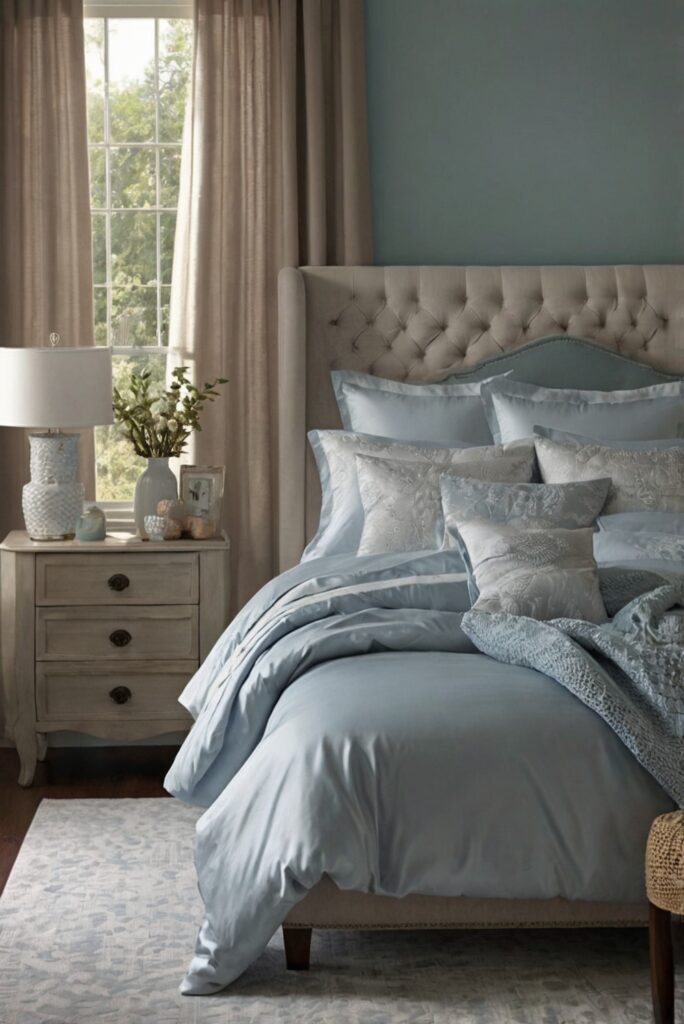In this daily routine post, discover the best bedding materials to ensure a good night’s sleep. Explore how interior designers elevate bedroom decor for ultimate comfort.
The best bedding materials for a good night’s sleep include:
1. Cotton: Known for its breathability and softness, cotton sheets are comfortable and easy to maintain.
2. Linen: Offers a luxurious feel and excellent moisture-wicking properties, keeping you cool in warm weather.
3. Silk: Provides a smooth and hypoallergenic sleeping surface, ideal for sensitive skin.
4. Bamboo: Eco-friendly and durable, bamboo sheets are soft and naturally antimicrobial.
5. Microfiber: Affordable and wrinkle-resistant, microfiber bedding is easy to care for.
By choosing the right bedding materials based on your preferences and budget, you can create a cozy and inviting bedroom that promotes a restful night’s sleep.
What are the Best Bedding Materials for a Good Night’s Sleep?
When it comes to getting a good night’s sleep, the bedding materials you choose play a crucial role. The right bedding materials can make a significant difference in the quality of your sleep. Here are some of the best bedding materials that can help you get a restful night’s sleep:
Cotton:
Cotton is a popular choice for bedding material due to its breathability and softness. It is a natural fiber that allows for good airflow, keeping you cool and comfortable throughout the night. Cotton bedding is also easy to care for and durable, making it a practical choice for many.
Linen:
Linen is another excellent option for bedding material. It is known for its luxurious feel and natural cooling properties. Linen bedding is highly breathable and moisture-wicking, helping you stay comfortable and dry while you sleep. It is also durable and gets softer with each wash, making it a long-lasting investment.
Microfiber:
Microfiber is a synthetic material that is gaining popularity in the bedding industry. It is a soft and lightweight fabric that is hypoallergenic and resistant to dust mites. Microfiber bedding is easy to care for and wrinkle-resistant, making it a convenient choice for those with busy lifestyles.
Conclusion:
Choosing the right bedding materials is essential for a good night’s sleep. Cotton, linen, and microfiber are among the best options available, each offering unique benefits to enhance your sleep experience. Experiment with different materials to find the one that suits your preferences and helps you get the restful sleep you deserve.
What are the Best Bedding Materials for a Good Night’s Sleep?
When it comes to getting a good night’s sleep, choosing the right bedding materials is crucial. The following are some of the best bedding materials that can help you achieve a restful night:
1. Cotton:
Cotton is a popular choice for bedding material as it is breathable, soft, and durable. It helps regulate body temperature and is suitable for all seasons, making it an excellent choice for a comfortable night’s sleep.
2. Linen:
Linen is another great bedding material known for its breathability and moisture-wicking properties. It is ideal for hot sleepers as it helps keep you cool during the night, promoting better sleep quality.
3. Bamboo:
Bamboo bedding is gaining popularity due to its softness, hypoallergenic properties, and sustainability. It is naturally antimicrobial and moisture-wicking, making it a great choice for those with allergies or sensitive skin.
Silk:
Silk is a luxurious bedding material that is smooth, soft, and gentle on the skin. It is known for its temperature-regulating properties, keeping you comfortable throughout the night. Silk bedding is also hypoallergenic, making it a good choice for allergy sufferers.
Wool:
Wool bedding is excellent for maintaining a comfortable sleep environment as it is naturally breathable and moisture-wicking. It helps regulate body temperature, keeping you warm in winter and cool in summer, ensuring a good night’s sleep.

